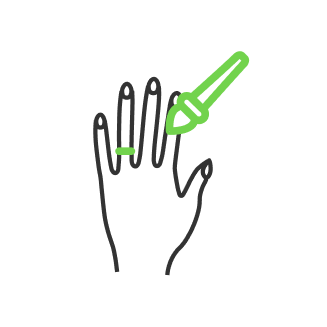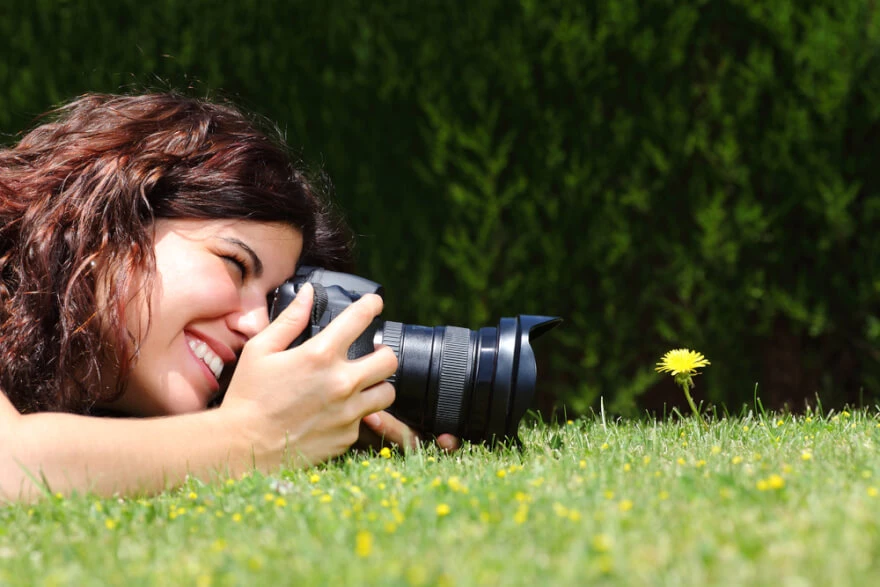Bird Photography Tutorial: Expert Tips and Camera Settings for Stunning Avian Images

- The Gear: More Than Just a Big Lens
- Here's what's in my bag these days:
- Bird Photography Settings: The Technical Stuff That'll Make Your Head Spin
- Shutter Speed: Gotta Go Fast
- Aperture: Let the Light Shine In
- ISO: Embracing the Grain
- Focus Mode: Keeping it Sharp
- Getting the Shot: Field Tricks and Embarrassing Blunders
- The Art of Not Scaring the Bejesus Out of Birds
- Birds in Flight: The Holy Grail of Bird Photography
- Creative Bird Photography Ideas: Think Outside the Nest
- The Dark Side: Post-Processing
- The Ethical Shooter: Because Birds Have Rights Too
- Gear Talk: The Never-Ending Upgrade Cycle
- Post-Processing Pitfalls: Keeping It Real
- Final Thoughts: The Joy of the Chase
Bird photography. Two words that conjure images of majestic eagles soaring through azure skies or tiny hummingbirds frozen in mid-flight. But let me tell you, the reality often involves more mud, mosquito bites, and missed shots than those picture-perfect moments. Yet, there's something undeniably addictive about it.
I stumbled into bird photography about five years ago. Literally stumbled - tripped over my own tripod trying to get a shot of a blue jay in my backyard. Knocked my teeth on the viewfinder and everything. Good times.

Since then, I've graduated from backyard bumbling to full-on bird-chasing madness. This bird photography tutorial is born from countless hours in the field, numerous failures, and those rare, perfect moments when everything aligns.

The Gear: More Than Just a Big Lens
First things first - gear. Now, I know you're eyeing that massive 600mm lens that costs more than your car. I get it. I've been there. But here's the thing - you don't need to sell a kidney to get started in bird photography.
Here's what's in my bag these days:
- Camera: A decent DSLR or mirrorless with good autofocus. I use a Canon 7D Mark II. It's not the fanciest, but it gets the job done.
- Lens: My workhorse is a 100-400mm zoom. Versatile and doesn't require a sherpa to carry.
- Support: A sturdy tripod. Your arms will thank you. Trust me on this one.
- Extras: Fast memory cards (because birds don't wait for buffering), spare batteries (nothing worse than a dead camera when that rare bird shows up), and a rain cover (because Mother Nature has a twisted sense of humor).
Oh, and if you're into the whole behind-the-scenes thing, consider investing in one of the top Action Cameras like GoPro. I strap one to my hat sometimes. The footage is hilarious, if not always flattering. Makes for great bloopers, though!

Bird Photography Settings: The Technical Stuff That'll Make Your Head Spin
Alright, let's dive into the nitty-gritty - camera settings for bird photography. This is where things get a bit... technical. But don't worry, I'll try to keep it simple. Or at least as simple as bird photography settings can be.
Shutter Speed: Gotta Go Fast
Bird photography shutter speed is crucial. These feathered friends move fast, so your shutter speed needs to keep up. Here's my rule of thumb:
- Perched birds: 1/500s or faster
- Birds in flight: 1/1000s to 1/2500s
Now, if you're feeling artsy, you can slow it down for some motion blur in photography. I once got a cool shot of a hummingbird with blurred wings at 1/15s. Of course, that was after about 200 failed attempts. Patience is key, folks.
Aperture: Let the Light Shine In
I usually shoot wide open. That means the lowest f-number your lens allows. Why? Two reasons:
- It lets in more light, which means you can use faster shutter speeds.
- It gives you that nice blurry background that makes the bird pop.
I typically shoot at f/4 or f/5.6. If I need more depth of field (like for a group of birds), I'll stop down to f/8 or f/11.
ISO: Embracing the Grain
Here's a hard truth: sometimes you've gotta crank that ISO to get the shot. Start low (100 or 200) in good light, but don't be afraid to go higher when needed. Modern cameras can handle 1600 or even 3200 pretty well. A grainy shot is better than a blurry one!
Focus Mode: Keeping it Sharp
For stationary birds, single-point AF is your friend. For birds in flight, switch to continuous AF (AI Servo for Canon, AF-C for Nikon) with dynamic area. It takes practice, but once you get it, you'll be nailing those in-flight shots like a pro.
Remember, these are just starting points for settings for bird photography. The best way to find your perfect setup is to get out there and experiment. Every situation is different, and half the fun is figuring out what works best.

Getting the Shot: Field Tricks and Embarrassing Blunders
Now that we've covered the basics, let's talk about actually getting those shots. This part of our bird photography guide involves a lot of waiting, some bizarre contortions, and occasionally explaining to concerned passersby that you're not, in fact, having a medical emergency.

The Art of Not Scaring the Bejesus Out of Birds
Birds, as it turns out, aren't big fans of paparazzi. Who knew? The key to getting close is to be as unobtrusive as possible. Here are some bird photography tips I've learned the hard way:
- Dress the part: Leave the neon windbreaker at home. Think earth tones and patterns. I once wore a ghillie suit in summer. Pro tip: don't do that unless you enjoy marinating in your own sweat.
- Move like molasses: Slow, smooth movements are the name of the game. Pretend you're in a tai chi class, but with more mosquitoes.
- Use natural cover: Trees, bushes, rocks – anything to break up your outline. I once spent two hours crouched behind a bush, only to realize I was allergic to it. The things we do for art.
- Patience is more than a virtue: It's a necessity. I've waited hours for a particular bird to show up. Sometimes it does, sometimes it doesn't. That's nature for you.

Birds in Flight: The Holy Grail of Bird Photography
Ah, birds in flight photography. The holy grail of bird photography, and also the bane of many a photographer's existence. It's challenging, frustrating, and when you nail it, absolutely exhilarating.
Here are some birds in flight photography tutorials condensed into bite-sized tips:
- Practice on easier targets: Start with larger, slower birds like herons or gulls before moving on to the speed demons.
- Use continuous autofocus: We covered this in settings, but it bears repeating. Continuous AF is your best friend here.
- Pan with the bird: Follow the bird's movement smoothly. It takes practice, but your keeper rate will skyrocket.
- Burst mode is your friend: Take advantage of your camera's continuous shooting mode. More shots = higher chance of a winner.
- Be ready: Birds don't usually announce their takeoff. Stay alert and be ready to swing into action at a moment's notice.
I once spent an entire day trying to photograph swallows in flight. Out of 2000 shots, I got maybe 5 keepers. But man, those 5 shots were worth it.

Creative Bird Photography Ideas: Think Outside the Nest
Sometimes, you want to go beyond the standard portrait shot. Here are some bird photography ideas to spice up your portfolio:
- Silhouettes: Catch a bird against a sunrise or sunset for a dramatic effect. I got a great shot of a heron silhouetted against a red sky. Looked like something out of a kung fu movie.
- Reflections: Water can be your best friend. Look for opportunities to capture birds and their reflections. Just don't fall in. Not that I'm speaking from experience or anything...
- Environmental shots: Include the bird's habitat to tell a fuller story. A bird on a nest, surrounded by spring blossoms? chef's kiss
- Action shots: Capturing birds mid-action – fishing, fighting, or feeding – can lead to dynamic images. I once caught two seagulls fighting over a fish. It was like an avian WWE match.
- Abstract close-ups: Get in close (if possible) and focus on interesting patterns or colors in feathers. The iridescence on a hummingbird's throat? Stunning.

The Dark Side: Post-Processing
(Where Good Photos Become Great and Bad Photos Become... Less Bad)
Now, let's talk about what happens after the shoot. Post-processing is where good photos become great, and where you can sometimes salvage a shot you thought was a goner.
- Shoot in RAW: I mentioned this before, but it's worth repeating. RAW files give you so much more flexibility in post.
- Cropping is your friend: Sometimes, perfect composition in-camera just isn't possible. Don't be afraid to crop in post.
- Adjust exposure carefully: Especially important for birds with white or very dark feathers. Nothing worse than a 'burnt out' white egret.
- Sharpen with care: A little sharpening can bring out feather detail, but too much looks unnatural. You want a bird, not a porcupine.
- Remove distractions: Sometimes you need to remove a shadow or a distracting element. Learning how to Remove a shadow can be a game-changer in your post-processing workflow. Just remember, the goal is to enhance your images, not create something that wasn't there.
For more specialized editing, you might want to explore dedicated Animals photo editor software that offers tools specifically designed for wildlife photography. These can be particularly useful for enhancing feather details and natural colors.

The Ethical Shooter: Because Birds Have Rights Too
Alright, time for some real talk. As much as we all want that perfect shot, it's crucial to remember that we're dealing with living creatures in their natural habitats. Here's my two cents on being an ethical bird photographer:
- Keep your distance: Use that long lens for a reason. Getting too close stresses birds out and can disrupt feeding or nesting.
- No baiting: I know it's tempting to lure birds with food, but it's a big no-no. It can alter their natural behaviors and diets.
- Know the rules: Different areas have different regulations. Do your homework before you head out.
- Respect nesting sites: Breeding season is not the time to get up close and personal. Give nesting birds plenty of space.
- Leave no trace: This should go without saying, but pack out what you pack in. We're guests in their home, after all.

Gear Talk: The Never-Ending Upgrade Cycle
Let's face it, gear acquisition syndrome is real in photography, and bird photography is no exception. But before you remortgage your house for that newest 800mm super-telephoto, remember this: the best camera is the one you have with you.
That said, if you're looking to upgrade, here are a few things to consider:
- Focus on glass: A better lens will usually make more difference than a new camera body.
- Consider weight: That massive lens might seem great until you're lugging it through a swamp for hours.
- Weather sealing: Birds don't care about rain, and neither should your gear.
- Used gear is okay: You can find some great deals on slightly older models that still perform brilliantly.

Post-Processing Pitfalls: Keeping It Real
In the age of Photoshop, it's easy to go overboard with editing. While post-processing is a valuable tool, there's a fine line between enhancement and manipulation. Here are some guidelines I try to follow:
- Subtle is better: If your edits are the first thing people notice, you've probably gone too far.
- Be honest: If you've made significant changes, be upfront about it, especially in competitions or publications.
- Preserve the environment: Don't add or remove elements that significantly alter the scene.
- Respect the species: Avoid editing that changes the appearance of the bird to the point of misrepresentation.

Final Thoughts: The Joy of the Chase
At the end of the day, bird photography is about more than just the images. It's about the experiences, the early mornings, the missed shots, and those rare, perfect moments when everything comes together.
I've spent countless hours in fields, forests, and marshes, often coming home with nothing more than mosquito bites and muddy boots. But you know what? I wouldn't trade it for anything. The anticipation, the challenge, and the sheer joy of observing these incredible creatures in their natural habitats – that's what keeps me coming back.
So, whether you're just starting out or you're a seasoned pro, remember to enjoy the process. Take time to watch the birds, learn their behaviors, and appreciate the world they inhabit. Sometimes, the best moments happen when you put the camera down and simply observe.
And hey, if you're ever feeling discouraged, remember that for every stunning shot you see online, there are probably hundreds of blurry, badly composed, or missed shots behind it. We've all been there. I once spent an entire day trying to photograph a particular owl, only to realize when I got home that I'd left the lens cap on for half the shots. Facepalm moment of the year.
So grab your camera, head out into nature, and start your own bird photography adventure. Who knows? You might just capture something extraordinary. And even if you don't, you'll have stories to tell and experiences you'll never forget.
Happy shooting, and may the birds be with you!
Co-founder of RetouchMe. In addition to business, he is passionate about travel photography and videography. His photos can be viewed on Instagram (over 1 million followers), and his films can be found on his YouTube channel.
Moreover, his profile is featured on the most popular and authoritative resource in the film industry — IMDb. He has received 51 international awards and 18 nominations at film festivals worldwide.

with RetouchMe














